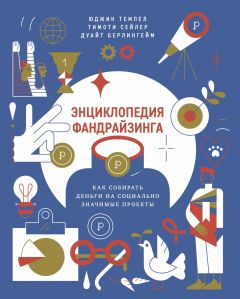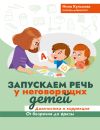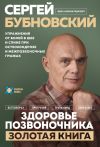
Автор книги: Коллектив авторов
Жанр: О бизнесе популярно, Бизнес-Книги
Возрастные ограничения: +16
сообщить о неприемлемом содержимом
Текущая страница: 42 (всего у книги 44 страниц)
Библиография
21/64 and Dorothy A. Johnson Center for Philanthropy. 2013. #NEXTGENDONORS: Respecting Legacy, Revolutionizing Philanthropy. New York, NY. Retrieved from: www.nextgendonors.org/wp-nextgendonors/wp-content/uploads/next-gen-donors-brief.pdf.
Ableson, James L., T. M. Erickson, S. E. Mayer, J. Crocker, H. Briggs, N. L. Lopez-Duran, and I. Liberzon. 2014. “Brief Cognitive Intervention Can Modulate Neuroendocrine Stress Responses to the Trier Social Stress Test: Buffering Effects of a Compassionate Goal Orientation.” Psychoneuroendocrinology, 44: 60–70.
Adelman, Carol, Yula Spantchak, Kacie Marano, and Jeremiah Norris. 2013. 2013 Index of Global Philanthropy and Remittances with a Special Report on Emerging Economies. Washington, DC: Hudson Institute.
Aknin, Lara B., Elizabeth W. Dunn, and Michael I. Norton. 2012. “Happiness Runs in a Circular Motion: Evidence for a Positive Feedback Loop Between Prosocial Spending and Happiness.” Journal of Happiness Studies, 13: 347–355.
Aknin, Lara B., Christopher P. Barrington-Leigh, Elizabeth W. Dunn, John F. Helliwell, Robert Biswas-Diener, Imelda Kemeza, Paul Nyende, Claire Ashton-James, Michael I. Norton. 2013. “Prosocial Spending and Well-Being: Cross-Cultural Evidence for a Psychological Universal.” Journal of Personality and Social Psychology, 104: 635–652.
Aknin Lara B., Alice L. Fleerackers, and J. Kiley Hamlin. 2014. “Can Third-Party Observers Detect the Emotional Rewards of Generous Spending?” The Journal of Positive Psychology, 9(3): 198–203.
Alden, Lynn E. and Jennifer L. Trew. 2013. “If it Makes You Happy: Engaging in Kind Acts Increases Positive Affect in Socially Anxious Individuals.” Emotion, 13(1): 64–75.
Aldrich, Eva E. 2011. Giving USA 2011 Spotlight #2: Giving By Immigrants. Chicago, IL: Giving USA Foundation.
Anderson, Albert. 1996. Ethics for Fundraisers. Indianapolis, IN: Indiana University Press.
Anderson, Chris. 2008. The Long Tail: Why the Future of Business is Selling Less of More. New York: Hyperion.
Andreasen, Alan R. 2009. “Cross-Sector Marketing Alliances: Partnerships, Sponsorships, and Cause-Related Marketing.” In Joseph J. Cordes and C. Eugene Steuerle (eds.), Nonprofits and Business. Washington, DC: Urbana Institute Press.
Andreasen, Alan R. and Philip Kotler. 2008. Strategic Marketing for Nonprofit Organizations, 7th ed. Upper Saddle River, NJ: Pearson/Prentice Hall.
Andreoni, James, Eleanor Brown, and Isaac Rischall. 2003. “Charitable Giving by Married Couples: Who Decides and Why Does it Matter?” The Journal of Human Resources, 38(1): 111–133.
Andresen, Katya. 2006. Robin Hood Marketing: Stealing Corporate Savvy to Sell Just Causes. San Francisco, CA: Jossey-Bass.
Anft, Michael. 2002. “Tapping ethnic wealth: Charities Pursue Minority Giving as Incomes Rise Among Blacks, Hispanics, and other groups.” The Chronicle of Philanthropy, January 10, 2002.
Anheier, Helmut K. and Siobhan Daly. 2005. “Philanthropic Foundations: A New Global Force?” In Global Civil Society. London: SAGE Publications Ltd.
Anik, Lalin, Lara B. Aknin, Michael I. Norton, and Elizabeth W. Dunn. 2009. “Feeling Good About Giving: The Benefits (and Costs) of Self-Interested Charitable Behavior.” In Harvard Business School Marketing Unit Working Paper No. 10–012.
Association of Fundraising Professionals. 2003. AFP Fundraising Dictionary. Alexandria, VA: Association of Fundraising Professionals.
Association of Fundraising Professionals. 2006. International Statement of Ethical Principles in Fundraising. Association of Fundraising Professionals. http://www.afpnet.org/Ethics/IntlArticleDetail.cfm?itemnumber=3682.
Association of Fundraising Professionals. 2014. AFP Compensation and Benefits Survey.
Arlington, VA: AFP Research. Available at www.afpnet.org/FEB.
Association for Healthcare Philanthropy. 2012. “AHP Standards for Reporting and Communicating Effectiveness in Health Care Philanthropy.” Falls Church, VA: Association for Healthcare Philanthropy.
Association for Healthcare Philanthropy. 2014. “Two New Reports Confirm Number of Fundraisers, Staff Retention Key to Raising More Dollars, AHP Says.” Accessed June 10, 2015: http://www.nonprofitpro.com/article/reports-confirm-number-fundraisers-staff-retention-key-raise-more/.
Aufreiter, Nora, Julien Boudet, and Vivian Weng. 2014. “Why Markerters Should Keep Sending You E-mails.” McKinsey & Company. Available at http://www.mckinsey.com/insights/marketing_sales/why_marketers_should_keep_sending_you_emails.
Austin, James E. 2000. The Collaboration Challenge. San Francisco, CA: Jossey-Bass. Auten, Gerald E., Charles T. Clotfelter, and R. L. Schmalbeck. 2000. “Taxes and Philanthropy Among the Wealthy.” In Joel B. Slemrod (ed.), Does Atlas Shrug? The Economic Consequences of Taxing the Rich, pp. 392–424. Cambridge, MA: Harvard University Press.
Auten, Gerald E., Holger Sieg, and Charles T. Clotfelter. 2002. “Charitable Giving, Income, and Taxes: An Analysis of Panel Data.” American Economic Review, 92(1): 371–382.
Badgett, M. V. Lee. 2001. Money, Myths, and Change: The Economic Lives of Lesbians and Gay Men. Chicago, IL: University of Chicago Press.
Badgett, M. V. Lee and Nancy Cunningham. 1998. Creating Communities: Giving and Volunteering by Gay, Lesbian, Bisexual, and Transgender People. New York, NY and Amherst, MA: Working Group on Funding Lesbian and Gay Issues and Institute for Gay and Lesbian Strategic Studies.
Badgett, M. V. Lee, Holning Lau, Brad Sears, and Deborah Ho. 2007. Bias in the Workplace: Consistent Evidence of Sexual Orientation and Gender Identity Discrimination. Los Angeles, CA: The Williams Institute.
Banaji, Mahzarin R. and Anthony Greenwald. 2013. Blindspot: Hidden Biases of Good People. New York: Random House.
Bankers Trust Private Banking. 2000. Wealth with Responsibility/Study 2000. Bankers Trust Private Banking.
Bell, Jeanne and Marla Cornelius. 2013. Underdeveloped: A National Study of Challenges Facing Nonprofit Fundraising. Oakland, CA: Compass Point and the Evelyn and Walter Hass, Jr. Fund.
Benson, Peter L. and Viola L. Catt. 1978. “Soliciting Charity Contributions: The Parlance of Asking for Money.” Journal of Applied Social Psychology, 8: 84–95.
Berkshire, Jennifer C. 2012. “Charities Pick up New Ways of Reaching Elusive Donors by Phone.” The Chronicle of Philanthropy, September 30, 2012.
Berkshire, Jennifer C. 2014. “Social-Service Group’s Potential to Do More Inspires Donor to Give.” The Chronicle of Philanthropy, October 23, 2014.
Bethel, Sheila Murray. 1993. Beyond Management to Leadership: Designing the 21st Century Association. Washington, DC: Foundation of the American Society of Association Executives.
Better Business Bureau Wise Giving Alliance. 2014. “How We Accredit Charities.” Accessed December 30, 2014: http://www.give.org/for-charities/How-We-Accredit-Charities/.
Beyel, Joseph S. 1997. “Ethics and Major Gifts.” In Dwight F. Burlingame and James M. Hodges (eds.), Developing Major Gifts pp. 49–59. San Francisco, CA: Jossey-Bass.
Bhagat, Vinay, Pam Loeb, and Mark Rovner. 2010. The Next Generation of American Giving: A Study on the Multichannel Preferences and Charitable Habits of Generation Y, Generation X, Baby Boomers, and Matures. Austin, TX: Convio and Edge Research.
Bhagat, Vinay, Dennis McCarthy and Bryan Snyder. 2012. “The Convio Online Marketing Nonprofit Benchmark Index Study.” Austin, TX: Convio.
Bishop, Matthew and Michael Green. 2008. Philanthrocapitalism. New York: Bloomsbury Press.
Blackbaud. 2014. “Show the Love: Thoughtful Engagement to Retain Supporters.” Accessed June 15, 2015: https://hello.blackbaud.com/1064_CORP_npExperts_DonorRetention_SharedAssets_RegistrationLP.html.
Block, Peter. 1993. Stewardship: Choosing Service Over Self-Interest. San Francisco, CA: Berrett-Koehler.
Bloland, Harland G. and Rita Bornstein. 1990. “Fundraising in Transition: The Professionalization of an Administrative Occupation.” In Taking Fund Raising Seriously: Papers Prepared for the Third Annual Symposium, Indiana University Center on Philanthropy, Indiana University-Purdue University Indianapolis, June 6–8, 1990.
Bloland, Harland G. and Eugene R. Tempel. 2004. “Measuring Professionalism.” In New Directions for Philanthropic Fundraising, No. 43, pp. 5–20. San Francisco, CA: Jossey-Bass.
Blumberg, Stephen J. and Julian V. Luke. 2014. “Wireless Substitution: Early Release of Estimates from the National Health Interview Survey.” National Center for Health Statistics. Available from: http://www.cdc.gov/nchs/data/nhis/earlyrelease/wireless201412.pdf.
BoardSource. 2012a. Nonprofit Board Answer Book: A Practical Guide for Board Members and Chief Executives, 3rd ed. San Francisco, CA: Jossey-Bass.
BoardSource. 2012b. Nonprofit Governance Index 2012. Retrieved from: http://www.thenonprofitpartnership.org/files/board-source-governance-2012.pdf.
BoardSource. 2014. Leading with Intent 2014: A National Index of Nonprofit Board Practices. Retrieved from: https://www.boardsource.org/eweb/images/bds2012/Leading-with-intent-PV.pdf. BoardSource. 2015. Leading with Intent 2015: A National Index of Nonprofit Board Practices. Washington, DC: BoardSource.
Bowersock, G. W. 2015. “Money and your Soul.” The New York Review of Books, May 21, 2015. Brogan, Chris. 2010. Social Media 101: Tactics and Tips to Develop Your Business Online. Hoboken, NJ: John Wiley & Sons, Inc.
Brown, Eleanor. 2006. “Married Couples’ Charitable Giving: Who and Why.” In Martha A. Taylor and Sondra Shaw-Hardy (eds.), The Transformative Power of Women’s Philanthropy, pp. 69–80. San Francisco, CA: Wiley Periodicals Inc.
Brown, Eleanor and Patrick M. Rooney, P. 2008. “Proceedings from The Center on Philanthropy at Indiana University 20th Annual Symposium: Men, Women, X and Y: Generational and Gender Differences in Motivations for Giving.” Indianapolis, IN: Unpublished report.
Brummelman, Eddie, Sander Thomaes, Stefanie A. Nelemansd, Bram Orobio de Castrob, Geertjan Overbeeka, and Brad J. Bushmane. 2015. “Origins of Narcissism in Children.” Proceedings of the National Academy of Sciences, 112: 3659–3662.
Bryan, Brielle. 2008. Diversity in Philanthropy. Foundation Center. Retrieved from: http://foundationcenter.org/getstarted/topical/diversity_in_phil.pdf.
Bureau of Labor Statistics. 2015. “CPI Inflation Calculator.” Accessed June 8, 2015: http://www.bls.gov/data/inflation_calculator.htm.
Burke, Penelope. 2003. Donor Centered Fundraising: How to Hold on to Your Donors and Raise More Much More Money. Chicago, IL: Cygnus Applied Research, Inc.
Burke, Penelope. 2014. Donor Centered Leadership: What It Takes to Build a High Performance Fundraising Team. Chicago, IL: Cygnus Applied Research, Inc.
Burlingame, Dwight F. 2003. “Corporate Giving and Fund Raising.” In Eugene R. Tempel (ed.), Achieving Excellence in Fund Raising, 2nd ed., pp. 177–187. San Francisco, CA: Jossey-Bass.
Burlingame, Dwight F. and Dennis R. Young. 1996. Corporate Philanthropy at the Crossroads.
Bloomington, IN: Indiana University Press.
Business Civic Leadership Center. 2008. Corporate Community Investment Study. Washington, DC: US Chamber of Commerce.
Cagney, Penelope. 2013. “The Global Fundraising Revolution.” Advancing Philanthropy, Spring.
Callahan, David. 2015. “He May be Popular Now, But Darren Walker Has a Tough Message for the Nonprofit World.” Inside Philanthropy, July 9, 2015.
Cam, Kelly. 2013. “Women in Leadership and Philanthropy.” Presentation at the Council for Advancement and Support of Education and Women in Philanthropy Conference, Indianapolis, Indiana, November 3, 2013.
Campobasso, Laura and Dan Davis. 2001. Reflections on Capacity Building. Woodland Hills, CA: California Wellness Foundation.
Carbone, Robert F. 1989. Fundraising as a Profession. College Park, MD: Clearing House for Research on Fund Raising.
Carbone, Robert F. 1997. “Licensure and Credentialing as Professionalizing Elements.” In New Directions for Philanthropic Fundraising, No. 15, pp. 83–96. San Francisco, CA: Jossey-Bass.
Carmichael, Mary. 2007. “A Shot of Hope.” Newsweek, October 1, 2007.
Chance, Zoe and Michael I. Norton. 2015. I Give, Therefore I Have: Giving and Subjective Wealth. Unpublished manuscript.
Chao, Jessica, Julia Parshall, Desire´e Amador, Meghna Shah, Armando Yan˜ez. 2008. Philanthropy in a Changing Society. Rockefeller Philanthropy Advisors. Retrieved from: http://rockpa.org/document.doc?id=27.
Charities Aid Foundation. 2010. The World Giving Index 2010. Accessed June 11, 2015 https://www.cafonline.org/pdf/WorldGivingIndex28092010Print.pdf.
Chaves, Mark. 2004. Congregations in America. Cambridge, MA: Harvard University Press. Chobot, Richard B. 2004. “Fundraising Credentialing.” In New Directions for Philanthropic Fundraising, No. 43, pp. 31–50. San Francisco, CA: Jossey-Bass.
Choi, Namkee G. and Jinseok Kim. 2011. “The Effect of Time Volunteering and Charitable Donations in Later Life on Psychological Wellbeing.” Ageing and Society, 31: 590–610.
Chrislip, David D. and Carl E. Larson. 1994. Collaborative Leadership: How Citizens and Civic Leaders Make a Difference. San Francisco, CA: Jossey-Bass.
Citigroup. 2002. Among the Wealthy: Those Who Have It Give It Away. Citigroup. Clohesy, William W. 2003. “Fund-Raising and the Articulation of Common Goods.” Nonprofit and Voluntary Sector Quarterly 32(1): 128–140.
Clotfelter, Charles T. 1990. The Impact of Tax Reform on Charitable Giving: A 1989 Perspective (Working Paper No. 3273). Cambridge, MA: National Bureau of Economic Research.
Cluff, Angela. 2009. “Dispelling the Myths about Major Donor Fundraising.” International Journal of Nonprofit and Voluntary Sector Marketing, 14(4): 371–377.
Cohen, Todd. 2007. “Nonprofit Training Seen Trailing Demand.” Philanthropy Journal, May 29, 2007.
Cohen, Janet, and Donna Red Wing. 2009. “Raising Heck and Raising Funds: A Conversation About Lesbian Philanthropy.” Presentation at the annual AFP International Conference, New Orleans, Louisiana, March 29–April 1, 2009.
Collin, N. 2009. “5 Reasons Creatives Hate Working for You”. http://ezinearticles.com/?5-Reasons-Creatives-Hate-Working-For-You-(And-What-To-Do-About-It)&id=3279820.
Committee Encouraging Corporate Philanthropy (CECP). 2008. Giving in Numbers. Washington, DC: Committee Encouraging Corporate Philanthropy
Cone Communications. 2013. Social Impact Study: The Next Cause Evolution. Boston, MA: Cone Communications.
Connolly, Lori. 2011. “View from the Digital Inbox 2011.” Columbia, MD: Merkle, Inc.
Conway, Daniel. 2003. “Practicing Stewardship.” In Eugene R. Tempel, Achieving Excellence in Fund Raising, 2nd ed., pp. 431–441. San Francisco, CA: Jossey-Bass.
Corporation for National and Community Service. 2010. “Volunteering in America Research Highlights.” Retrieved January 10, 2010 from http://www.volunteeringinamerica.gov/.
Corporation for National and Community Service. 2014. “Volunteering and Civic Life in America.” Accessed April 30, 2014: http://www.volunteeringinamerica.gov/infographic.cfm.
Corporation for National and Community Service. 2015. “Volunteering and Civic Engagement in the United States: Trends and Highlights Overview.” Retrieved March 30, 2015 from http://www.volunteeringinamerica.gov/.
Covey, Stephen M. R. 2006. The Speed of Trust. New York: Free Press.
Crutchfield, Leslie R. and Heather McLeod Grant. 2008. Forces for Good: The Six Practices of High-Impact Nonprofits. San Francisco, CA: Jossey-Bass.
Cummins. 2009. Sustainability Report: A Legacy of Dependability and Responsibility. Indianapolis, IN: Cummins, Inc.
Cummins. 2014. Living Our Values Through Our People, Products, and Practies: Sustainability Progress Report: 2013–2014. Indianapolis, IN: Cummins, Inc.
Cunningham, Nancy. 2005. “Myth Versus Reality: State of the Lesbian, Gay, Bisexual, and Transgender Community and Philanthropy’s response.” In State of Philanthropy 2004, pp. 10–14. Washington, DC: National Committee for Responsible Philanthropy.
Cutlip, Scott M. 1965. Fund Raising in the United States: Its Role in American Philanthropy. New Brunswick, NJ: Rutgers University Press.
Daniels, Alex. 2015. “Foundation Heads Call on Peers to Publicize Diversity Data.” The Chronicle of Philanthropy, June 29, 2015.
Danner, Deborah D., David A. Snowdon, and Wallace V. Friesen. 2001. “Positive Emotions in Early Life and Longevity: Findings from the Nun Study.” Journal of Personality and Social Psychology, 80(5): 804–813.
Demographics Now. 2010. Table of the United States Population, Age by Sex Summary Report. http://www.demographicsnow.com, Jan 2010.
Dove, Kent E. 2000. Conducting a Successful Capital Campaign, 2nd ed. San Francisco: Jossey-Bass.
Drezner, Noah D. 2013. Expanding the Donor Base in Higher Education: Engaging Non-Traditional Donors. New York: Routledge.
Drucker, Peter F. 1990. Managing the Non-profit Organization: Practices and Principles. New York, NY: HarperCollins.
Dulin, Patrick L., J. Gavala, C. Stephens, M. Kostick, and J. McDonald. 2012. “Volunteering Predicts Happiness Among Older Maori and Non-Maori in the New Zealand Health, Work, and Retirement Longitudinal Study.” Aging and Mental Health, 16: 617–624.
Dunlop, David. R. 2000. “Fundraising for the Largest Gift of a Lifetime: From Inspiring the Commitment to Receiving the Gift.” Workshop at the Council for Advancement and Support of Education Conference (CASE), Charleston, SC, May 22–24, 2000.
Dunn, Elizabeth W., C. E. Ashton-James, M. D. Hanson, and L. B. Aknin. 2010. “On the Costs of Self-Interested Economic Behavior.” Journal of Health Psychology, 15: 627–633.
Dunn, Elizabeth W., Lara B. Aknin, and Michael I. Norton. 2008. “Spending Money on Others Promotes Happiness.” Science, 319: 1687–1688.
Duronio, Margart A. and Eugene R. Tempel. 1997. Fund Raisers: Their Careers, Stories, Concerns, and Accomplishments. San Francisco, CA: Jossey-Bass.
Eckel, Catherine, David Herberich and Jonathan Meer. 2014. “A Field Experiment on Directed Giving at a Public University.” Accessed January 15, 2015: https://site.stanford.edu/sites/default/files/eckel_herberich_meer_directed_giving.pdf.
Eisner, David, Robert T. Grimm, Jr., Shannon Maynard and Susannah Washburn. 2009. “The New Volunteer Workforce.” Stanford Social Innovation Review, Winter 32–37.
Elliot, D. 1991. “What Counts as Deception in Higher Education Development.” In Dwight F. Burlingame and Lamont J. Hulse (eds.), Taking Fund Raising Seriously. San Francisco, CA: Jossey-Bass.
Ellis, Susan J. and Katherine H. Noyes. 1990. By the People: A History of Americans as Volunteers. San Francisco, CA: Jossey-Bass.
English, Cynthia. 2011. “Civic Engagement Highest in Developed Nations.” Retrieved June 20, 2015 from http://www.gallup.com/poll/145589/civic-engagement-highest-developed-countries.aspx.
Fender, Stacy A. 2011. “Philanthropy in the Queer Community: A Review and Analysis of Available Research and Literature on Philanthropy Within the Queer Community from 1969 to 2009.” MA thesis, Saint Mary’s University of Minnesota.
Fischer, Marilyn. 2000. Ethical Decision Making in Fund Raising. New York: John Wiley & Sons, Inc.
Fishman, James J. and Stephen Schwarz. 2010. Nonprofit Organizations, 4th ed. New York: Foundation Press.
Flandez, Raymund. 2013. “As Wedding Bells Ring, Charities Seek Support from Newly Visible Same-Sex Couples.” Chronicle of Philanthropy, May 19, 2013.
Fleishman, Joel L. 2007. The Foundation: A Great American Secret. New York: Public Affairs. Foundation Center. 2014. Key Facts on U. S. Foundations. New York: Foundation Center. Frantzreb, Arthur C. 1991. “Seeking Big Gifts.” In Henry A. Rosso Achieving Excellence in
Fund Raising, pp.117–129. San Francisco, CA: Jossey-Bass.
Fried, Linda P., M. C. Carlson, M. Freedman, K. D. Frick, T. A. Glass, J. Hill, S. McGill, G. W. Rebok, T. Seeman, J. Tielsch, B. A. Wasik, and S. Zeger. 2004. “A Social Model for Health Promotion for an Aging Population: Initial Evidence on the Experience Corps Model.” Journal of Urban Health, 81(1): 64–78.
Friedman, Milton. 1970. “The Social Responsibility of Business is to Increase its Profits. The New York Times Magazine, September 13, 1970.
Fry, Richard. 2013. “Four Takeaways from Tuesday’s Census Income and Poverty Release.” Pew Research Center. Retrieved from: http://www.pewresearch.org/fact-tank/2013/09/18/four-takeaways-from-tuesdays-census-income-and-poverty-release/.
Galaskiewicz, Joseph and Michelle Sinclair Colman. 2006. “Collaboration between Corporations and Nonprofit Organizations.” In W. W. Powell and R. Steinberg (eds.), The Nonprofit Sector: A Research Handbook, 2nd ed., pp. 180–204. New Haven, CT: Yale University Press.
Gallo, Marcia M. 2001. “Lesbian Giving – and Getting: Tending Radical Roots in an Era of Venture Philanthropy.” Journal of Lesbian Studies, 5: 63–70.
Garber, Sheldon. 1993. “The Fund Raising Professional: An Agent for Change.” Presentation at the International Conference for the Association of Healthcare Philanthropy, Chicago, IL, October 4, 1993.
Gardner, John W. 1990. On Leadership. New York: The Free Press.
Garvey, Jason C. and Noah D. Drezner. 2013a. “Advancement Staff and Alumni Advocates: Cultivating LGBTQ Alumni by Promoting Individual and Community Uplift.” Journal of Diversity in Higher Education, 6(3): 199–218.
Garvey, Jason C. and Noah D. Drezner. 2013b. “Alumni Giving in the LGBTQ Communities: Queering Philanthropy.” In Noah D. Drezner (ed.), Expanding the Donor Base in Higher Education: Engaging Non-Traditional Donors, pp. 74–86. New York: Routledge.
Gates, Gary J. 2011. How Many People are Lesbian, Gay, Bisexual, and Transgender? Los Angeles, CA: The Williams Institute, UCLA School of Law.
Gates, Gary J. 2015. Demographics of Married and Unmarried Same-Sex Couples: Analyses of the 2013 American Community Survey. Los Angeles, CA: The Williams Institute, UCLA School of Law.
Gates, Gary J. and Frank Newport. 2012. “Special Report: 3.4% of U. S. Adults Identify as LGBT.” Gallup, October 18, 2012. Available at: http://www.gallup.com/poll/158066/special-report-adults-identify-lgbt.aspx
Gilmore, James H. and B. Joseph Pine II. 2007. Authenticity. Boston, MA: Harvard Business School Press.
Giving USA: The Annual Report on Philanthropy for the year 2008. 2009. Chicago: Giving USA Foundation.
Giving USA: The Annual Report on Philanthropy for the year 2013. 2014. Chicago: Giving USA Foundation.
Giving USA: The Annual Report on Philanthropy for the year 2014. 2015. Chicago: Giving USA Foundation.
Gladwell, Malcolm. 2000. The Tipping Point: How Little Things Can Make a Big Difference. Boston, MA: Little, Brown and Company. Gourville, John and V. Kasturi Rangan. 2004. “Valuing the Cause Marketing Relationship.” California Management Review, 47(1), 38–56.
Gray, Kurt. 2010. “Moral Transformation: Good and Evil Turn the Weak into the Mighty.”
Social Psychological and Personality Science, 1(2): 253–258.
Greenfield, James M. 2002. Fundraising Fundamentals: A Guide to Annual Giving for Professionals and Volunteers, 2nd ed. New York: John Wiley & Sons, Inc.
Greenfield, Emily A. and Nadine F. Marks. 2004. “Formal Volunteering as a Protective Factor for Older Adults’ Psychological Well-Being.” Journal of Gerontology, 59B(5): S258–S264.
Gunderman, Richard. B. 2009. We Make a Life by What We Give. Bloomington, IN: Indiana University Press.
Hall, Holly. 2007. “Evaluating How Well a Fund Raiser Does in Luring Big Gifts.” Chronicle of Philanthropy, October 1, 2007.
Hall, Holly. 2010. “People Skills No Longer Sufficient for Fund Raisers to Thrive.” The Chronicle of Philanthropy, April 4.
Hacker, Holly K. 2009. “Seven Universities Raise Enough for ‘Tier One’.” Dallas Morning News, September 2, 2009.
Hager, Mark. 2004. “Exploring Measurement and Evaluation Effects in Fundraising.” New Directors in Philanthropic Fundraising, no. 41. San Francisco: Jossey-Bass.
Harbaugh, William T., Ulrich Mayr, and Daniel R. Burghart. 2007. “Neural Responses to Taxation and Voluntary Giving Reveal Motives for Charitable Donations.” Science, 316: 1622–1625. Oxford: Oxford University Pres.
Havens, John J. and Paul G. Schervish. 2001. “Wealth and Commonwealth: New Findings on Wherewithal and Philanthropy.” Nonprofit and Voluntary Sector Quarterly, 5–25.
Havens, John J., Mary A. O’Herlihy, and Paul G. Schervish. 2006. “Charitable Giving: How Much, by Whom, to What, and How?” In Walter Powell and Richard Steinberg (eds.), The Nonprofit Sector: A Research Handbook, pp. 542–567. New Haven, CT: Yale University Press.
Heath, Chip and Dan Heath. 2007. Made to Stick: Why Some Ideas Survive and Others Die. New York: Random House.
Helms, Sara and Jeremy P. Thornton. 2008. The Influence of Religiosity on Charitable Behavior: A COPPS Investigation (Working Paper). Birmingham, AL: Brock School of Business at Samford University.
Hirschfelder, Adam S. and Sabrain L. Reilly. 2007. “Rx: Volunteer, A Prescription for Healthy Aging.” In Stephen G. Post (ed.), Altruism and Health: Perspectives from Empirical Research, pp. 116–140.
HNW Inc. 2000. HNW Wealth Pulse: Wealth and Giving. HNW Inc.
Ho, S. Shaun, S. Konrath, S. Brown, J. E. Swain. 2014. “Empathy and Stress Related Neural Responses in Maternal Decision Making.” Frontiers in Neuroscience, 8: 152. doi: 10.3389/fnins.2014.00152.
Hodgkinson, Virginia. 2002. “Individual Volunteering and Giving.” In Lester Salamon (ed.), The State of Nonprofit America. Washington, DC: Brookings Institution Press.
Hope Consulting. 2010. Money for Good: The US Market for Impact Investments and Charitable Gifts from Individual Donors and Investors. Hope Consulting.
Hopkins, Bruce R. 2002. The Law of Fundraising, 3rd ed. New York: John Wiley & Sons, Inc. Horizons Foundation. 2008. Building a New Tradition of LGBT Philanthropy. San Francisco, CA: Horizons Foundation.
Huang, Yunhui. 2014. “Downward Social Comparison Increases Life-Satisfaction in the Giving and Volunteering Context.” Social Indicators Research. doi: 10.1007/s11205-014-0849-6.
Hudnut-Beumler James. 2007. In Pursuit of the Almighty’s Dollar. Chapel Hill, NC: University of North Carolina Press.
Hunter, K. I. and Margaret W. Linn. 1981. “Psychosocial Differences Between Elderly Volunteers and Non-Volunteers.” The International Journal of Aging and Human Development, 12(3): 205–213. IEG Sponsorship Report. 2009. IEG, LLC. www.sponsorship.com/iegsr.
Ilchman, Warren F., Stanley N. Katz, and Edward L. Queen. 1998. Philanthropy in the World’s Traditions. Bloomington, IN: Indiana University Press.
Immigration Policy Center. 2014. Strength in Diversity: The Economic and Political Power of Immigrants, Latinos, and Asians. American Immigration Council. Retrieved from: http://www.immigrationpolicy.org/just-facts/strength-diversity-economic-and-political-power-immigrants-latinos-and-asians.
Independent Sector. 1996. Giving and Volunteering in the United States. Washington, DC. Independent Sector. 1998. Public Policy Update: Special Report. Washington, DC. Independent Sector. 2001. Giving and Volunteering in the United States. Washington, DC. Independent Sector. 2002a. Ethics and the Nation’s Voluntary and Philanthropic Community: Obedience to the Unenforceable. Washington, DC.
Independent Sector. 2002b. The New Nonprofit Almanac and Desk Reference. Washington, DC.
Independent Sector. 2007. Principles of Good Governance and Ethical Practice. Washington, DC.
Independent Sector. 2014. Value of Volunteer Time. Retrieved April 22, 2015 from: http://independentsector.org/volunteer_time.
Independent Sector. 2015. Principles for Good Governance and Ethical Practice: A Guide for Charities and Foundations. Washington, DC
Indiana University Center on Philanthropy. 2006. Bank of America Study of High Net Worth Philanthropy: Portraits of Donors. Indianapolis, IN: The Trustees of Indiana University.
Indiana University Center on Philanthropy. 2007. Corporate Philanthropy: The Age of Integration. Indianapolis, IN: The Trustees of Indiana University.
Indiana University Center on Philanthropy. 2008a. Bank of America Study of High Net Worth Philanthropy. Indianapolis, IN: The Trustees of Indiana University.
Indiana University Center on Philanthropy. 2008b. An Analysis of Million Dollar Gifts (2000–2007). Indianapolis, IN: The Trustees of Indiana University.
Indiana University Center on Philanthropy. 2008c.Bank of America Study of High Net Worth Philanthropy: Portraits of Donors. Indianapolis, IN: The Trustees of Indiana University.
Indiana University Center on Philanthropy. 2009a. Philanthropic Giving Index: Summer 2009.
Indianapolis: The Trustees of Indiana University.
Indiana University Center on Philanthropy. 2009b. Overview of Overall Giving. Philanthropy Panel Study. Retrieved from: http://www.philanthropy.iupui.edu/files/research/2009ppskeyfindings.pdf.
Indiana University Center on Philanthropy. 2010. Bank of America Merrill Lynch Study of High Net Worth Philanthropy. Indianapolis, IN: The Trustees of Indiana University.
Indiana University Center on Philanthropy. 2011. 2011 Study of High Net Worth Women’s Philanthropy and the Impact of Women’s Giving Networks. Indianapolis, IN: The Trustees of Indiana University.
Indiana University Center on Philanthropy. 2012. Bank of America Merrill Lynch Study of High Net Worth Philanthropy. Indianapolis, IN: The Trustees of Indiana University.
Indiana University Lilly Family School of Philanthropy. 2014. The 2014 U. S. Trust Study of High Net-Worth Individuals. Indianapolis, IN: The Trustees of Indiana University.
Indiana University Lilly Family School of Philanthropy. 2015. The Philanthropy Outlook: 2015 & 2016. Indianapolis, IN: The Trustees of Indiana University.
Indiana University The Fund Raising School. 2002. Principles and Techniques of Fundraising.
Indianapolis, IN: The Trustees of Indiana University.
Indiana University The Fund Raising School. 2009. Principles and Techniques of Fundraising.
Indianapolis, IN: The Trustees of Indiana University.
Indiana University The Fund Raising School. 2015. Principles and Techniques of Fundraising: Study Guide. Indianapolis, IN: The Fund Raising School.
Правообладателям!
Это произведение, предположительно, находится в статусе 'public domain'. Если это не так и размещение материала нарушает чьи-либо права, то сообщите нам об этом.








































